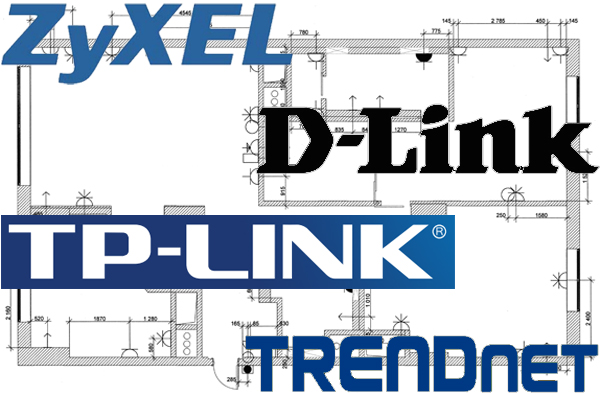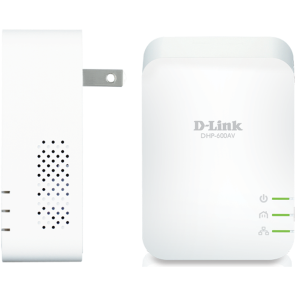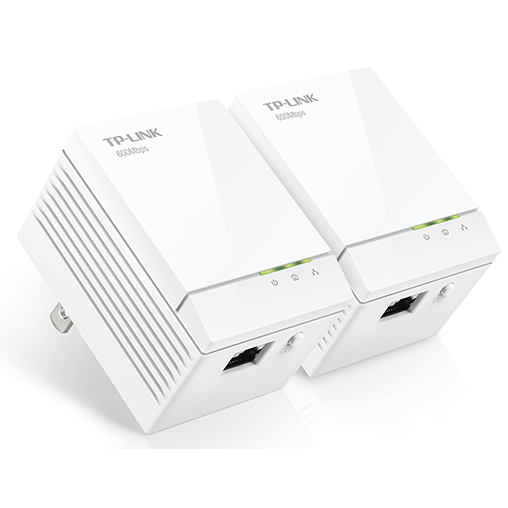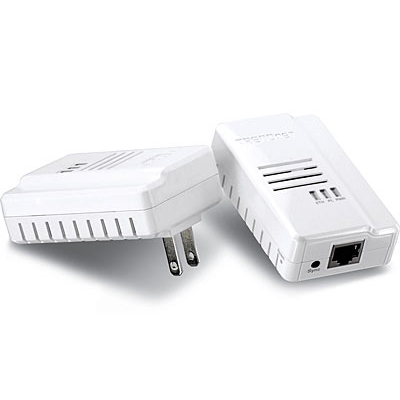HomePlug AV2 Powerline Networking Adapter Round-Up
Powerline technology can help augment the demands placed on your existing Wi-Fi network, but at what speeds? We tested four powerline adapters to find out.
Introduction
Why you can trust Tom's Hardware
Choosing the best powerline networking adapter is no easy task. They have many optional capabilities, including outlet pass-through, antennas to repeat or extend Wi-Fi signals and multiple Ethernet ports, with more on the way. How can you find the one that performs the best?
We decided to test the fastest single-purpose powerline networking adapters to see what speeds are achievable when vendors focus on nothing other than optimal powerline throughput.
In reviewing the best sellers for powerline network adapters on Amazon, we chose the following vendors, which marketed powerline adapters in the 500 Mp/s and up range: D-Link, TP-Link, TRENDnet and ZyXEL. Many of the companies we spoke to advised us that they were working on updated versions of these adapters to meet the HomePlug AV2 specification, and that the new versions would be released this year. Should today's review postdate some of those launches, consider the results as a baseline to which the newer powerline adapters can be compared. Let's see how our chosen few line up along technical specifications.
MORE: Powerline Networking 101
MORE: How We Test Powerline Adapters
MORE: All Powerline Content
MORE: All Networking Content
A Note About Standards
Before we jump to discussing each powerline network adapter, I have to rant a bit about the HomePlug AV2 standard and a consumer's ability to verify that the product is certified. If you haven't read about the process, check out the HomePlug Alliance Certification process in our How We Test Powerline Network Adapters piece. Understandably, the HomePlug Alliance is very choosy about how vendors display the HomePlug Alliance Certification Mark as well as when it can be displayed.
The primary way to verify that a product is HomePlug Certified is to look for the HomePlug logo. Allegedly for consumer convenience, the HomePlug Alliance also provides a list of Home Plug Certified Products. Great! It's time to search. Admittedly, I'm biased in my desire for easy-to-access results, but let's take a look at an example using the first product in our round-up, D-Link's DHP-600AV. If you visit the list, you're informed that there are currently 180 products on it. How do we search for the DHP-600AV? Well, we can't enter the model number as a search term because that option isn’t available. Hmm…
What if we apply one of the category filter options (think tagged content) and select HomePlug AV2? As of this writing, that returns only four results?? That seems low, right? D-Link does have a product listed in the results, but it's not the DHP-600AV. OK, maybe it hasn't yet received HomePlug AV2 certification. Let's see if the results are different when we apply the HomePlug AV filter option. Nine pages of results look promising, but I don't want to have to scroll through nine pages, so is there a sorting option? Nope! Paging through nine clicks later, I find no mention of the DHP-600AV.
As a last-ditch effort, I try the site-wide search option. No luck. Just to eliminate my possible misunderstanding of how the product may be listed, I go back to those four pages of HomePlug AV2 products to copy an entry. I copy the product entry, throw the term in the search field and hope. Here, too, we reach a wall as no results come back.
What I learned from this experience is that it seems the only way I can verify if a product is certified according to the most recent HomePlug AV standard is to trust the vendor, look for the logo or request a copy of the letter of certification. <end rant>
So, why is being able to verify a product important? In this case, it lets us more easily sift through powerline adapters we know meet the standard versus others that may implement HomePlug AV in a slightly different manner. Using powerline adapters from the same vendor in that case wouldn't necessarily be an issue as long as they were purchased in the same relative time period. This is because we could assume the vendor would implement the standard similarly in those models. The key issue on that front then is continued interoperability as we continue to add more devices and accessories.
The deeper aspect is that vendors may market the technology behind the standard, rather than how the product is actually compliant with or certified to that standard. We'll discuss later if that could potentially have an effect on performance.
First up in our review, we take a look at the D-Link DHP-600AV.
Get Tom's Hardware's best news and in-depth reviews, straight to your inbox.
-
Glock24 I'm curious about device interoperability. If all those devices you tested conform to the same standard, can you mix and match those devices in the same network?Reply -
heffeque ReplyI'm curious about device interoperability. If all those devices you tested conform to the same standard, can you mix and match those devices in the same network?
Almost no PLC will work with other brands... and most won't even work between different versions of the same brand. -
joex444 On your conclusions page you link to an article that Tom's did in 2009 and claim the test result showed powerline adapters that failed to get 10Mb/s. In fact that link shows adapters that failed to get 10MB/s -- a factor of 8 higher due to your units error. The lowest rate in 2009 was 20Mb/s and many were in the 50-80Mb/s.Reply -
aldenf Good article. Thanks, Matthew!Reply
I read the linear 300m range, for the DHP-600AV anyway, as the maximum length of electrical wiring between adapters, not the allowable length of CAT twixt an adapter and device.
Powerline networking has had ample opportunity to mature. If it can't sustain 200Mbps, it is of little use to me or my clients. Scenario: Someone wants an Ethernet drop in three rooms of his house. That's $300 in hardware alone... Does the hardware for multiple drops of Ethernet interfere with each other and how badly? I can only imagine that in extreme cases, where CAT5e/6 can't reasonably be run, would this even be an option. Too bad, really... -
chalabam ReplyI'm curious about device interoperability. If all those devices you tested conform to the same standard, can you mix and match those devices in the same network?
Almost no PLC will work with other brands... and most won't even work between different versions of the same brand.
That's the point of the standards, to assure that each device is compatible with one of another vendor.
If a device doesn't works with another, it doesn't works with the standard.
A specific model will never be the best for ever. You will replace it with the future best one, and you don't want to replace all, or throw the present one to the garbage because they can't communicate with each other.
-
heffeque Reply
Well this isn't the case. The fact is that they don't operate well when not paired up with equals, so what do you propose.16653190 said:I'm curious about device interoperability. If all those devices you tested conform to the same standard, can you mix and match those devices in the same network?
Almost no PLC will work with other brands... and most won't even work between different versions of the same brand.
That's the point of the standards, to assure that each device is compatible with one of another vendor.
If a device doesn't works with another, it doesn't works with the standard.
A specific model will never be the best for ever. You will replace it with the future best one, and you don't want to replace all, or throw the present one to the garbage because they can't communicate with each other. -
RealBeast The newest models (AV1200 with MIMO) get about twice the speed of these older units that you tested. I've tried three sets based on solid reviews and they have all performed quite well. The are a little more expensive and still nowhere near gigabit Ethernet, but all three got over 200Mbps on distant plugs, with the TP-LINK TL-PA8030P-KIT at $70 on Amazon hitting over 250Mbps consistently with low latency, IMO quite usable particularly for gamers.Reply -
dragget ReplyThe newest models (AV1200 with MIMO) get about twice the speed of these older units that you tested.
I find it really puzzling that they would review these older, slower devices instead of the new MIMO models. Several manufacturers have had these newer models out on the market for some time now.
-
jmaier Extollo's LANSocket 1500 seems to be the fastest on the market today. See articles from CNET: http://www.cnet.com/products/extollo-lansocket-1500-powerline-adapter-kit/ and TechHive: http://www.techhive.com/article/2981494/home-networking/extollo-communications-lansocket-1500-review-top-speed-and-a-power-passthrough-too.htmlReply
It's based on the HomePlug AV2 standard and supports MIMO, it's using the latest powerline chips from Broadcom. It's a pass-through and a bit bulky. I believe the bigger size is needed for the multiple transmitters and receivers to support MIMO. Extollo has one of the best product manuals, it provides a fairly succinct overview of HomePlug's powerline networking concepts.
Matthew Matchen, how did you omit the LANSocket 1500 powerline adapter from your list of adapters to test?
-
matchenm Hi joex444,Reply
On your conclusions page you link to an article that Tom's did in 2009 and claim the test result showed powerline adapters that failed to get 10Mb/s. In fact that link shows adapters that failed to get 10MB/s -- a factor of 8 higher due to your units error. The lowest rate in 2009 was 20Mb/s and many were in the 50-80Mb/s.
Great catch! You're right that I need to correct that comparison. Hope to get that updated soon.



